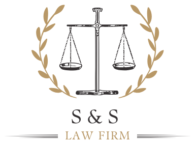HINDU LAW – BRIEF SUMMARY
UNIT – I: Joint Family and Property
- Application & Sources of Hindu Law: Includes Shruti, Smriti, customs, and modern judicial decisions.
- Schools: Mitakshara and Dayabhaga—differences in inheritance and rights.
- Hindu Joint Family: A unit comprising lineal descendants and common ancestors.
- Coparcenary: Only male members under Mitakshara (now amended) and their rights.
- Classification of Property: Ancestral vs. self-acquired.
- Karta: Head of joint family—powers, duties, and liability.
- Alienation of property: Karta vs. Coparcener’s rights and limits.
- Right to challenge: Coparceners can dispute improper transfers.
- Rights of Alienees: Legal remedies in case of invalid alienation.
🔹 Leading Cases:
- Harihar Prasad v. Balmika Prasad (AIR 1975 SC 733)
- K.S. Subhiah Pillai v. Commissioner of IT (AIR 1999 SC 1220)
UNIT – II: Hindu Marriage
- Nature & Evolution: Sacred and contractual perspectives.
- Hindu Marriage Act, 1955: Governing statute.
- Essential Conditions: Age, mental soundness, prohibited degrees.
- Ceremonies & Registration: Legal formalities for recognition.
- Remedies:
- Restitution of conjugal rights
- Void/Voidable marriages
- Divorce and judicial separation
- Ancillary Reliefs: Alimony, child custody, maintenance.
🔹 Leading Cases:
- Kailashwati v. Ayudhia Parkash (AIR 1977 PLR 216)
- Naveen Kohli v. Neelu Kohli (2006) 4 SCC 558
UNIT – III: Hindu Succession and Partition
- Hindu Succession Act, 1956 & 2005 Amendment: Equality to daughters.
- Rules of Succession: Separate rules for males and females.
- Mitakshara Coparcenary Rights: Succession and survivorship.
- Partition: Rights, subject matter, mode (actual vs. notional), partial partition, re-opening, re-union.
🔹 Leading Cases:
- Raghuvamma v. Chenchamma (AIR 1964 SC 136)
- CIT v. Chandersen (AIR 1986 SC 1753)
UNIT – IV: Guardianship & Adoption
- Minority & Guardianship (HMG Act, 1956): Natural, testamentary, de facto, certified, and by affinity.
- Adoption (HAMA, 1956):
- Conditions & Procedure
- Legal Effects
- Maintenance: Personal obligation and dependent’s right
- Property as source for maintenance
🔹 Leading Cases:
- G. Appaswami Chettiar v. R. Sarangapani (AIR 1978 SC 1051)
- Githa Hariharan v. RBI (1999) 2 SCC 228
Exam Pattern Summary
- Total Marks: 80
- Duration: 3 Hours
- Question Paper Structure:
- Section 1–4: Two questions from each Unit (choose 1 per section) – 14 marks each
- Section 5: 8 short questions (compulsory, 3 marks each)
